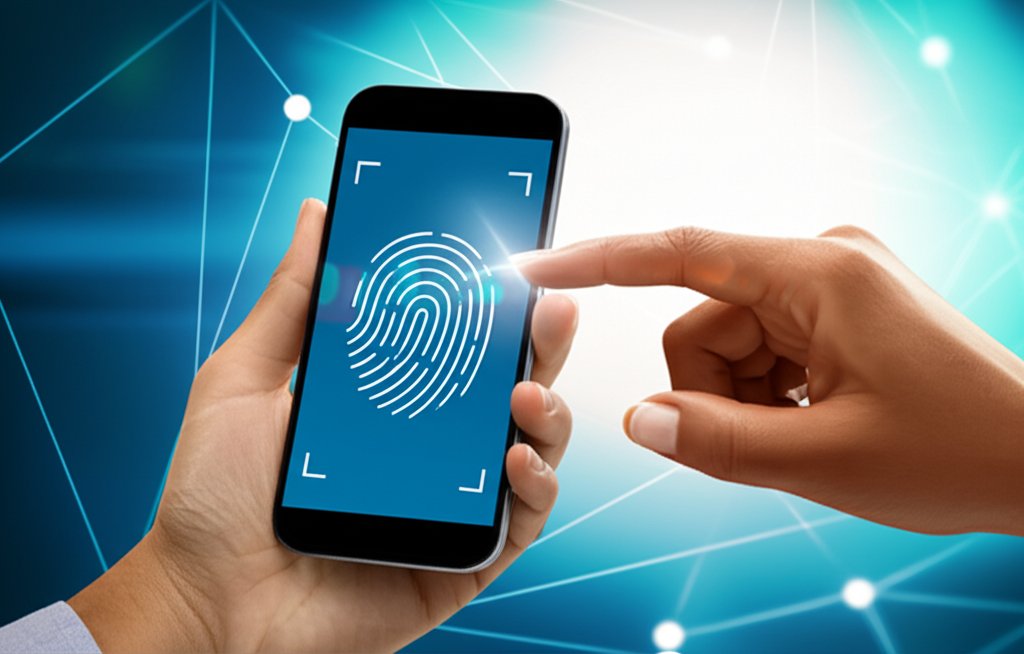Solving Identity Sprawl: A Practical Guide to Centralized Account Management for Everyone
Drowning in a sea of digital accounts, usernames, and forgotten passwords? It’s not just an inconvenience; it’s a security liability. This guide will demystify identity sprawl and introduce you to the power of centralized account management, showing you how to simplify your online life, boost your security, and protect your small business from growing cyber threats. Get ready to take practical, non-technical steps to regain control today!
What You’ll Discover
Ever feel like you’re playing a never-ending game of digital whack-a-mole with your online accounts? You’re not alone. In our hyper-connected world, we’re all juggling an increasing number of digital identities and credentials across countless websites, apps, and services. This uncontrolled growth of digital footprints isn’t just a minor hassle; it’s a significant and often underestimated security risk known as “identity sprawl.”
Here, we’re going to break down what identity sprawl truly means and introduce you to its powerful solution: centralized identity management. By the end of this guide, you’ll understand why this isn’t just a fancy IT term but a practical, empowering approach that can simplify your online life, drastically improve your digital security, and streamline operations for your small business.
We’ll walk through exactly what identity sprawl is, uncover its hidden dangers, and then provide you with clear, actionable steps to centralize your digital identities without needing to be a tech guru. You’ll learn how tools like advanced password managers, the simplicity of Single Sign-On (SSO) methods, and the critical protection of multi-factor authentication (MFA) can transform your digital experience. You’ll regain control and enjoy a more secure, less stressful online future.
Getting Ready to Reclaim Your Digital Life
Before we dive into the practical steps, understand that you’re already equipped for this journey. There are no complex technical prerequisites. All you truly need is a proactive mindset, a willingness to take control of your digital life, and a commitment to adopting better security hygiene. A little patience and the readiness to invest some time in auditing your current online presence will go a long way. No fancy software or deep technical knowledge is required—just a desire to empower yourself and secure your digital world.
Understanding the Problem: What Exactly is Identity Sprawl?
Let’s face it: our digital lives are messy. From social media profiles to online banking, streaming services, productivity apps, and countless shopping sites, we’ve accumulated dozens, if not hundreds, of online accounts. Each one represents a distinct digital identity, often with its own username and password. This uncontrolled, fragmented growth of digital accounts and credentials is precisely what we call identity sprawl.
Defining Identity Sprawl in Simple Terms
Think of it this way: Imagine you own a small business, and instead of having one organized filing cabinet for all your customer records, you have individual folders scattered across twenty different desks, some in other buildings, and a few you’ve forgotten about entirely. That’s identity sprawl in a nutshell – a lack of centralized oversight for your digital selves, both personally and professionally.
The Hidden Dangers for You and Your Business
This digital chaos isn’t just annoying; it creates serious vulnerabilities that cybercriminals actively love to exploit. It’s a fundamental security challenge for individuals and a significant risk to any security posture:
- Password Fatigue & Reuse: We’ve all been there. Too many accounts mean too many unique passwords to remember. The inevitable result? We often resort to weak, easily guessed passwords or, worse, reuse the same password across multiple sites. If just one of those sites gets breached, every account sharing that password is suddenly and completely vulnerable. This is low-hanging fruit for attackers.
- Increased Attack Surface: Every active online account you possess is a potential entry point for attackers. The more accounts you have—especially forgotten ones—the larger your “attack surface” becomes. This gives cybercriminals more opportunities to find a weakness and compromise your data or systems.
- Forgotten Accounts: How many old subscriptions, forum accounts, or trial memberships do you have that you no longer use? These forgotten accounts often contain personal data, from your name and email to payment information, and can be easily compromised if they’re not secured or closed. They become digital zombie accounts waiting to be exploited, giving attackers a backdoor into your past online activity.
- Difficulty Managing Access (for Small Businesses): For small business owners, identity sprawl makes it incredibly difficult to know who has access to what software, data, or systems. When an employee leaves, ensuring all their access is immediately and completely revoked across every platform can be a nightmare, leaving gaping security holes that can be exploited for weeks or months.
- Compliance Headaches: While this might seem more relevant to larger enterprises, even small businesses face obligations to protect customer and employee data. Fragmented identities make it incredibly challenging to demonstrate controlled access and meet privacy regulations like GDPR or HIPAA, should you be subject to them. This can lead to significant fines and reputational damage.
Centralized Identity Management: Your Digital Control Center
So, what’s the solution to this rampant digital disarray? It’s centralized identity management (CIM). Think of CIM as bringing all those scattered folders and accounts into one highly organized, locked, and easily manageable filing system. It’s about establishing a single source of truth for all your digital identities, providing a clear overview and strong control.
What is Centralized Identity Management (CIM)?
In simple terms, CIM is a unified strategy and set of tools that allow you to manage all your digital identities and their associated access privileges from a single, central system. Instead of individual logins for every service, you use one primary, securely managed identity to access everything you need.
How CIM Makes Your Digital Life Easier and Safer
Implementing CIM can feel like a breath of fresh air, transforming chaos into calm:
- Simplified Access: Imagine logging in once to access multiple services. That’s the power of Single Sign-On (SSO), a core component of CIM, dramatically reducing the number of passwords you need to remember and streamlining your daily workflow.
- Stronger Security: With identities managed centrally, you can enforce consistent, robust security policies across all your accounts. Implementing multi-factor authentication (MFA) across all your accounts becomes much simpler, adding critical layers of protection that make it significantly harder for attackers to break in.
- Reduced Password Stress: You’ll no longer agonize over creating unique, complex passwords for every new service or scramble to remember them. A good password manager, an essential part of CIM, takes care of that for you, generating and securely storing them so you only need to remember one master password.
- Better Oversight (for Small Businesses): CIM provides a clear, comprehensive view of who has access to what within your business. This streamlines onboarding new employees, granting them necessary access efficiently. Critically, it makes offboarding instant and complete, shutting down all access with a few clicks, preventing former employees from accessing sensitive data.
- Improved Compliance: By centralizing access, you can more easily monitor and audit identity-related activities, making it simpler to demonstrate compliance with data protection and privacy regulations. This transparency is crucial for protecting your business legally and reputationally.
Step-by-Step Instructions: Practical Steps to Centralize Your Identities
Ready to start taming your digital chaos? You don’t need expensive enterprise software to begin. Here are practical, non-technical steps you can take right now to centralize your identities and fortify your digital defenses:
-
Step 1: Inventory Your Digital Footprint – The Great Digital Census
This is your starting point – you can’t manage what you don’t know you have. Take some dedicated time to list every single online account you possess, both personal and business-related. Don’t rush this; it might take a few sessions. Think about:
- Email accounts: All of them, even old ones. This is crucial as email is often the gateway to many other accounts, and understanding critical email security mistakes can significantly reduce your risk.
- Social media profiles: Facebook, Instagram, LinkedIn, X (Twitter), TikTok, etc.
- Banking and financial services: Banks, credit cards, investment platforms, payment apps (PayPal, Venmo).
- Shopping websites: Amazon, eBay, clothing stores, local shops.
- Streaming services: Netflix, Spotify, Disney+, Hulu, etc.
- Cloud storage: Google Drive, Dropbox, OneDrive, iCloud.
- Productivity apps: Slack, Trello, Asana, Monday.com, project management tools.
- Any business-specific software or tools: CRM systems, accounting software (QuickBooks, Xero), marketing platforms, vendor portals.
How to do it: A simple spreadsheet (like Google Sheets or Excel) or even a dedicated notebook can work wonders here. As you encounter accounts, record the service name, your username, the email associated with it, and a note on its importance. Dig through your email archives for old signup confirmations, check your browser’s saved passwords (but don’t rely on them for security!), and review app lists on your phone and computer.
Pro Tip for Small Businesses: Get input from your team. Ask them to list all business-related accounts they use. This often uncovers shadow IT or forgotten subscriptions.
-
Step 2: Consolidate and Clean Up – Digital Decluttering
Once you have your comprehensive inventory, it’s time to declutter. For any unused, rarely used, or completely forgotten accounts, take decisive action:
- Close them down: If you don’t use it and don’t foresee needing it, delete it. Most services have a “delete account” or “close account” option buried in their settings or privacy dashboards. Be thorough; search for instructions if you can’t find it easily. This minimizes your attack surface.
- Update crucial accounts: For accounts you decide to keep (which should be the majority), ensure they are secured with strong, unique passwords and up-to-date recovery information. This leads us directly to our next crucial step…
Pro Tip for Individuals: If a service makes it difficult to delete your account, try searching “how to delete [service name] account” online. Often, community forums or dedicated websites provide the workaround.
-
Step 3: Embrace the Power of a Password Manager – Your Digital Vault
This is arguably the single most impactful step for personal and small business identity management. A password manager is an encrypted vault that securely stores all your strong, unique passwords for you, so you only need to remember one master password to unlock the vault itself.
- How it helps: It generates complex, unguessable passwords for every new account, automatically fills login forms on websites and apps, and securely syncs across all your devices (phone, tablet, computer). This eliminates password reuse and ensures every account has a fortress-strong, unique password.
- Recommendations: Look for reputable, user-friendly options. Popular choices include LastPass, 1Password, Bitwarden, or Dashlane. Many offer free personal tiers and affordable, feature-rich business plans.
Pro Tip for Small Businesses: Many password managers offer team features, allowing secure sharing of business-critical logins (e.g., social media accounts, vendor portals) without ever exposing the actual password to individual employees. This dramatically improves security and simplifies access management for shared resources.
-
Step 4: Leverage Single Sign-On (SSO) Where Possible – One Key for Many Doors
SSO allows you to log into multiple independent software systems with a single set of credentials. You’ve probably used it without realizing it, and it’s a cornerstone of centralized identity management.
- Common examples for individuals: “Login with Google,” “Login with Facebook,” “Login with Apple.” These are incredibly convenient. However, be acutely aware that if your primary Google/Facebook/Apple account is compromised, all linked services become vulnerable. Protect that primary account fiercely with MFA (our next step)!
- For small businesses: If you use cloud platforms like Google Workspace or Microsoft 365, you can often leverage their identity management capabilities to provide SSO for many other business applications. For example, an employee logs into their Google Workspace account once and can then access Slack, Zoom, Asana, and other connected apps without re-entering credentials. This makes user provisioning (adding new employees) and de-provisioning (removing former employees) much simpler and more secure, as you manage access from one central dashboard.
-
Step 5: Implement Multi-Factor Authentication (MFA) Everywhere – Your Essential Second Lock
Even with a centralized approach and strong passwords, MFA is your absolutely essential second line of defense. It requires you to provide two or more verification factors to gain access to an account, typically something you know (your password) and something you have (a code from an app or a physical key).
- Why it’s critical: If your password is stolen (e.g., in a data breach or phishing attack), an attacker still cannot get into your account without that second factor. It’s the digital equivalent of needing both a key and a fingerprint to open a vault.
- Best practice: Prioritize authenticator apps (like Google Authenticator, Authy, Microsoft Authenticator) over SMS-based MFA, as SMS can be vulnerable to interception (e.g., SIM swapping attacks). Hardware security keys (like YubiKey) offer the strongest protection, especially for your most critical accounts. Turn on MFA for every service that offers it – especially email, banking, social media, and your password manager.
-
Step 6: Regularly Review and Revoke Access – The Ongoing Audit
Centralized identity management isn’t a “set it and forget it” solution. Cyber threats evolve, and your digital footprint changes. Periodically review your accounts and access permissions:
- Personal: Once every few months, revisit your inventory. Do you still use that service? If not, close the account. Update passwords if needed.
- Business: Conduct regular access reviews (quarterly or semi-annually) to ensure employees only have the permissions they absolutely need for their current role (this is known as the “principle of least privilege”). Crucially, have a strict, documented offboarding process that immediately revokes all access for departed employees across all systems to prevent unauthorized access. For example, when “Sarah” leaves the marketing team, confirm her access is removed from the CRM, social media management tool, shared drive, and email immediately.
Common Issues & Solutions
Embarking on this journey might seem daunting, but it’s entirely manageable. Here are some common hurdles people encounter and how to overcome them:
-
Feeling Overwhelmed by the Inventory:
Solution: Don’t try to do it all at once. Break it down into manageable categories: personal email, social media, banking, then business tools. Tackle one category a day, or even just a few accounts at a time. The goal is progress, not perfection. Slow and steady wins the race.
-
Forgetting Your Password Manager’s Master Password:
Solution: This is critical! Ensure your master password for the password manager is incredibly strong (long, complex, unique) and memorable ONLY to you. Consider using a passphrase. Write it down physically and store it securely (e.g., in a locked safe at home), but never store it digitally or share it. Many password managers offer emergency kits or recovery options – understand how they work and store that information safely.
-
Resistance to Change (Especially for Small Businesses):
Solution: For small businesses, explain the “why” to your team. Focus on how these changes will simplify their daily workflow, reduce login headaches, and most importantly, protect their jobs and the business itself. Lead by example, provide clear, patient training, and highlight the convenience benefits alongside the security ones.
-
Finding the “Right” Tools:
Solution: Start with well-known, reputable tools (like the password managers mentioned earlier). Most offer free trials, allowing you to test them out. Don’t overthink it initially; getting started with a good-enough solution is always better than waiting indefinitely for the “perfect” one. You can always refine your tools later.
Advanced Tips: Choosing the Right Tools and Mindset
As you get comfortable with the basics, you might consider more robust solutions, especially for a growing small business.
What to Look for in Dedicated Identity Management Solutions (General Categories)
When you’re ready to explore dedicated identity management platforms (often called Identity and Access Management or IAM solutions), here’s what to prioritize:
- Ease of Use: This is paramount for everyday users and small businesses without dedicated IT staff. The interface should be intuitive for both administrators and end-users, reducing friction and training time.
- Integration Capabilities: Can it connect seamlessly with the apps and services you already use (e.g., Google Workspace, Microsoft 365, CRM, accounting software)? Good integration means less manual work and a more unified experience.
- Strong Security Features: Look for built-in MFA support, robust encryption for data at rest and in transit, and comprehensive audit trails that allow you to see who accessed what, when.
- Scalability: Can the solution grow with your business? Can it easily add or remove users and applications without becoming cumbersome or expensive?
- Support: Good customer support is invaluable when you’re navigating new technology. Look for vendors with responsive, knowledgeable support teams.
Shifting Your Mindset: From Individual Silos to a Unified Approach
Beyond the tools, a crucial part of solving identity sprawl is a mental shift. Instead of viewing each login as an isolated task, start seeing your digital identities as an interconnected web. Your goal is to manage that web from a central point, enforcing consistent security practices across the board. This unified approach is what truly enhances your digital resilience, providing peace of mind and robust protection. For businesses, this is especially vital in today’s environment, where robust remote work security is no longer optional.
The “Zero Trust” security model (Simplified)
As you gain more control, you might hear about the “Zero Trust” security model. Simply put, it’s about “never trust, always verify.” Instead of assuming everything inside your network or connected to your identity is safe, Zero Trust constantly verifies every user and device trying to access resources, regardless of their location. It’s a powerful mindset that complements centralized identity management beautifully, reinforcing the idea that every access request, even from a known user, should be authenticated and authorized based on real-time context and policy.
Your Next Steps
You’ve got the knowledge; now it’s time to act! Your most immediate and impactful next step is to begin that inventory. Don’t wait for a data breach to prompt you into action. Consider exploring free trials of recommended password managers to see which one feels right for you. As you become more advanced, you might also want to research the benefits of passwordless authentication. For small businesses, investigate how your existing cloud platforms (like Google Workspace or Microsoft 365) might offer built-in identity management capabilities you can leverage to centralize access for your team. There are many excellent resources and documentation available online for specific tools – don’t hesitate to consult them as you go. Every step you take makes a difference.
Conclusion: Reclaim Your Digital Peace of Mind
Identity sprawl is a real and growing threat, but it doesn’t have to be a permanent fixture of your digital life. By embracing centralized identity management, you’re not just tackling a technical problem; you’re reclaiming your digital peace of mind. You’ll reduce stress, drastically improve your overall cybersecurity posture, and for small businesses, enhance operational efficiency and compliance.
It’s a journey, not a one-time fix, but every step you take towards centralizing your identities makes you significantly safer and more efficient online. Don’t let the sheer number of accounts overwhelm you. You have the power to take control. Start your inventory today, choose a password manager, and begin building a more secure, less stressful digital future for yourself and your business!
Try it yourself and share your results! Follow for more practical security tutorials.









